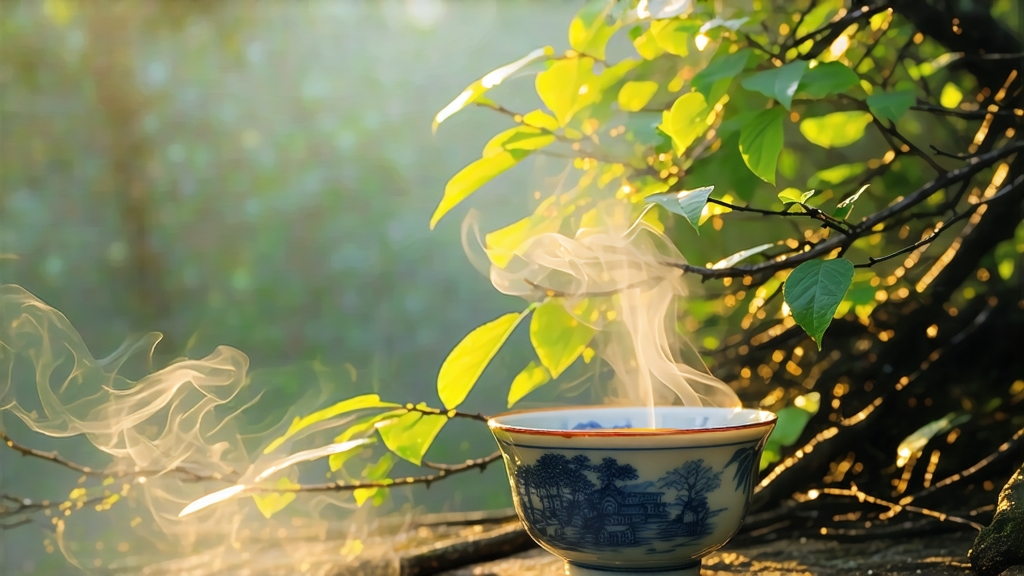
Alishan High-Mountain Oolong is not merely a tea; it is a liquid map of Taiwan’s central mountain range, a cup that carries the chill of 1,200-metre dawns, the perfume of rhododendron and cedar, and the patience of farmers who still decide each leaf’s fate by touch. To understand this cultivar—often labelled “阿里山高山茶” in Chinese but increasingly celebrated worldwide under its English name—is to enter a story that begins in the 19th-century tea gardens of Fujian, detours through colonial rail lines laid by the Japanese in 1910, and culminates on jade-green terraces that rise above the Tropic of Cancer like floating islands of chlorophyll.
History: From Fujian Cuttings to Cloud Forest
The genetic ancestor of Alishan High-Mountain Oolong is the Qing Xin (or “Green Heart”) cultivar brought from Fujian’s Wuyi Mountains during the late Qing dynasty. When Japanese agronomists expanded Taiwanese tea production in the 1920s, they selected Qing Xin for its slow growth and high aromatics at altitude. After World War II, Kuomintang veterans who had learned oolong craft in Fujian resettled around Chiayi County; they discovered that the volcanic shale of Alishan, drenched daily in cloud moisture, coaxed the bushes into producing leaves unusually rich in L-theanine and geraniol. By 1987, when Taiwan’s economy lifted and air freight opened global markets, Alishan oolong had become the flagship of the island’s “high-mountain” (gaoshan) movement, commanding prices that rivalled top Burgundy crus.
Terroir: Why Altitude Tastes Like Gardenia
Alishan is not a single peak but a 20-kilometre ridge system within the Yushan Range. Tea gardens sit between 1,000 and 1,400 m, a band where average temperature drops 0.6 °C for every 100 m gained. The resulting mist filters UV light, forcing the plant to synthesise more amino acids and monoterpene alcohols—molecules that translate into mouth-watering sweetness and heady floral top notes. At night, temperatures can fall below 12 °C even in July; the plant’s metabolic slowdown lengthens the overnight withering phase, concentrating flavour. Finally, the diurnal swing of 15 °C between day and night locks catechins and caffeine in a delicate balance, yielding a liquor that is both creamy and brisk, never astringent.
Harvest Calendar: Five Seasons in One Year
Unlike lowland teas, Alishan oolong is plucked year-round, each season offering a different aromatic signature.
- Spring (March–April): snow-melt water and cool nights create the most complex cup—orchid, honeydew, wet stone.
- Summer (May–June): stronger UV builds more polyphenols, giving a greener, almost gyokuro-like bite.
- Summer Second Flush (July): monsoon rains swell the leaves; flavour is lighter but fragrance more explosive.
- Autumn (September–October): cool, dry air produces the most “high mountain” character—jasmine, white peach.
- Winter (November): smallest yield, but leaves develop a rare milk-sweet note sought by connoisseurs.
Pluck Standard: One Heart, Two Leaves, Zero Sunburn
Pickers climb terraces before 8 a.m. while dew still glistens. Only the apical bud plus two unfolded leaves are taken; anything oxidised by prior-day sun is rejected. A skilled picker can gather just 6 kg of fresh leaf in four hours—enough, after processing, for 1 kg of finished tea.
Craft: The Rhythmic Eight-Step Ballet
- Solar Withering: leaves are spread on bamboo trays under filtered morning sun for 20–40 min to reduce moisture by 5 %.
- Indoor Withering: trays rest on racks in a climate-controlled room (22 °C, 65 % RH) for 6–10 h, with gentle tossing every hour to bruise leaf edges and initiate oxidation.
- Oxidation: the leaf pile is covered with wet muslin; enzymes convert catechins into theaflavins, stopping at 15–25 % oxidation—less than traditional Dong Ding, more than modern green oolong.
- Pan-Fixation: a 260 °C drum roaster halts oxidation in 3